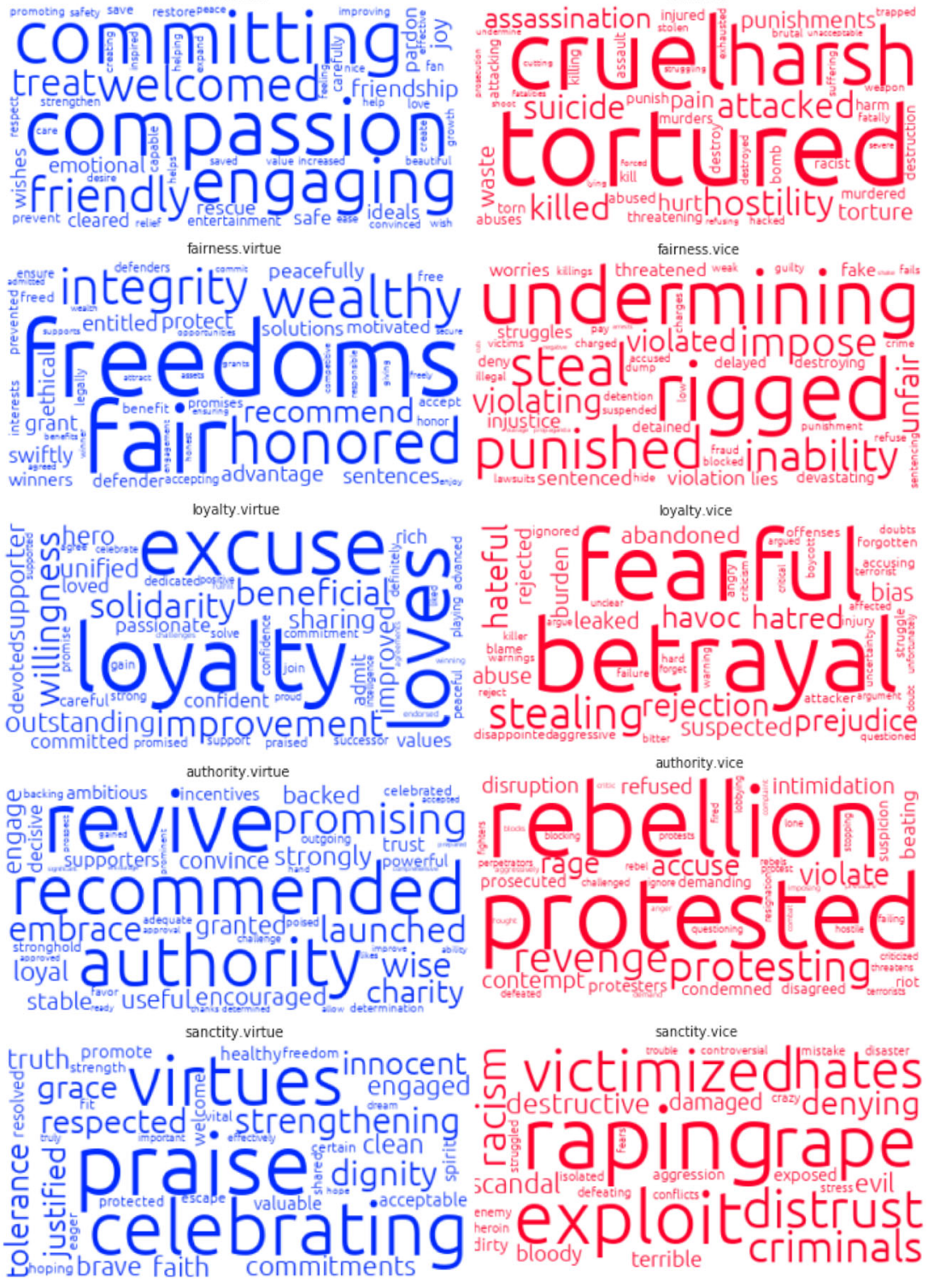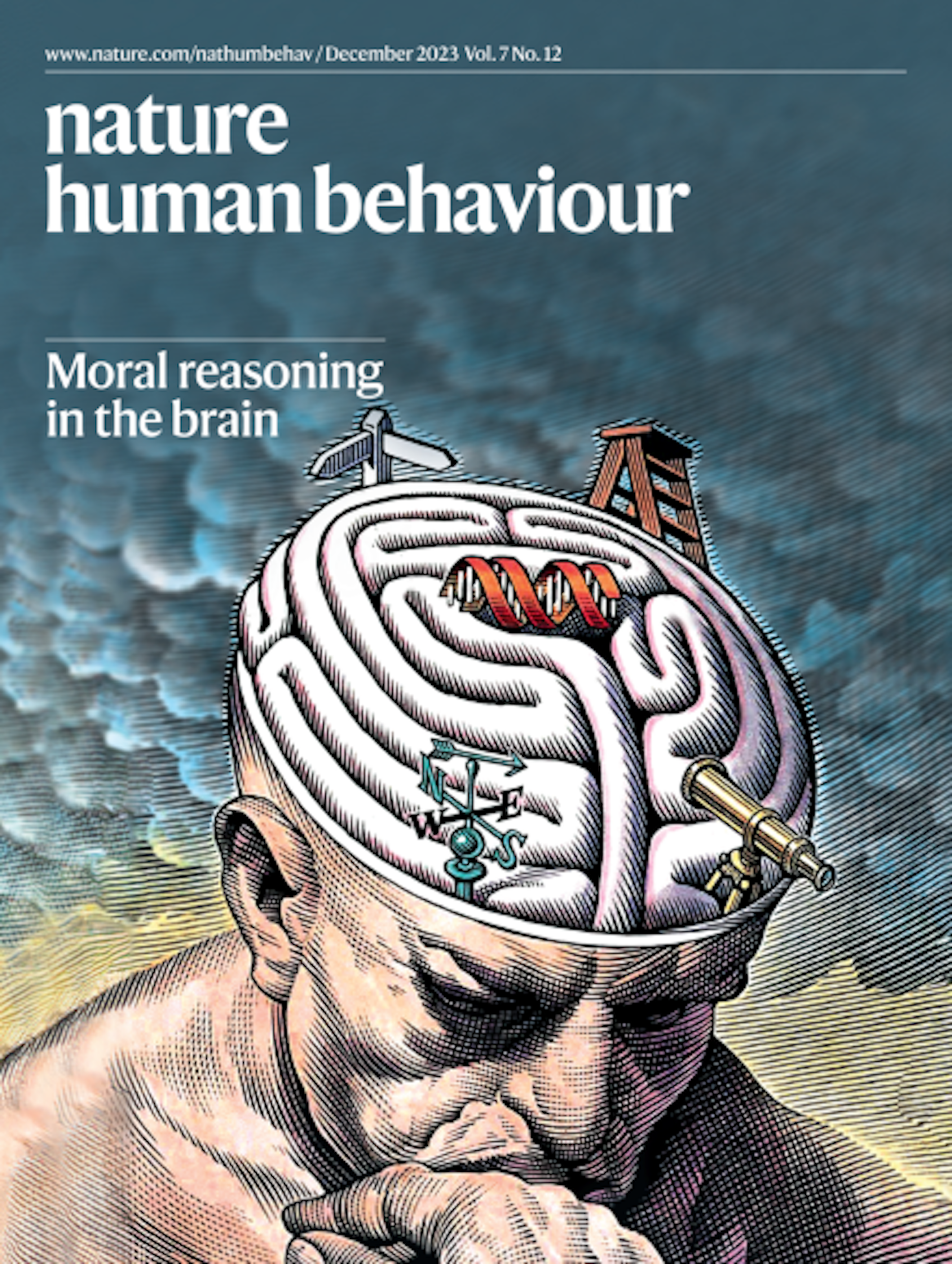Journal Publications
Electronic versions are provided as a professional courtesy to ensure timely dissemination of academic work for individual, noncommercial purposes. Copyright and all rights therein resides with the respective copyright holders, as stated within each paper. These files may not be reposted without permission.
Primary Research
Moral Foundations Elicit Shared and Dissociable Cortical Activation
Moral foundations theory posits that there are five or six universal groups of moral intuitions (that is, ‘foundations’), each of which is served by functionally specialized, dissociable cognitive mechanisms. We probed the neural (dis)unity of moral foundations theory and report that each moral foundation recruits domain-general mechanisms of social cognition, but also has a dissociable neural signature that is malleable by sociomoral experience.
• Hopp, F. R., Amir, O., Fisher, J. T., Grafton, S., Sinnott-Armstrong, W., & Weber, R. (2023). Moral foundations elicit shared and dissociable cortical activation modulated by political ideology. Nature Human Behaviour.
 The extended Moral Foundations Dictionary (eMFD)
The extended Moral Foundations Dictionary (eMFD)
Crowdsourcing Moral Sentiment
Extracting and analyzing moral content in messages, narratives, and other forms of public discourse is a critical step toward understanding how the psychological influence of moral judgments unfolds at a global scale. We introduce the extended Moral Foundations Dictionary (eMFD), a tool for extracting moral content from textual corpora. The eMFD, unlike previous methods, is constructed from text annotations generated by a large sample of human coders. The eMFD was featured by the Psychonomic Society.
• Hopp, F. R., Fisher, J. T., Cornell, D., Huskey, R., & Weber, R. (2021). The extended Moral Foundations Dictionary (eMFD): Development and applications of a crowd-sourced approach to extracting moral intuitions from text. Behavior Research Methods.
Reflections on Extracting Morality from Texts
How Methodological Decisions Impact Moral Content Analyses
The valid extraction of moral information from media content is a critical step toward understanding the dynamic transactions between moral frames and real-world events. In two review articles, we provide a commentary on recent approaches and procedures.
• Hopp, F. R., & Weber, R. (2021). Reflections on extracting moral foundations from media content. Communication Monographs.
• Hopp, F. R., & Weber, R. (2021). Rejoinder: How methodological decisions impact the validity of moral content analyses. Communication Monographs.
Dynamic Transactions Between Moralized News and Events
A Hidden Markov Model Approach
We present a macro-scale investigation of the dynamic transactions between moralized news and events using Hidden Markov Models (HMMs). Using 3,501,141 news records discussing 504,759 unique events, we demonstrate that sequences of news and events can be characterized in terms of “hidden states” containing distinct moral frames and event relationships, and that these “hidden states” can forecast future news frames and events.
• Hopp, F. R., Fisher, J. T., & Weber, R. (2020). Dynamic transactions between news frames and sociopolitical events: an integrative, hidden Markov model approach. Journal of Communication.
See also:
• Malik, M., Hopp, F. R., Chen, Y., & Weber, R. (2021). Does regional variation in pathogen prevalence predict the moralization of language in COVID-19 news? Journal of Language and Social Psychology.
Detecting Moral Conflicts in Movie Scripts
A Graph-Learning NLP Approach
Moral conflict is central to appealing narratives, but no methodology exists for computationally extracting moral conflict from narratives at scale. We combine tools from social network analysis and natural language processing to detect and classify moral conflicts across 894 movie scripts encompassing 82,195 scenes. We show that scenes containing moral conflict between central characters can be identified using changes in connectivity patterns between character network modules. We also derive computational models for standardizing moral conflict measurements. Our results suggest that this method can accurately extract moral conflict from a diverse collection of movie scripts.
• Hopp, F. R., Fisher, J. T., & Weber, R. (2020). A Graph-Learning Approach for Detecting Moral Conflict in Movie Scripts. Media & Communication.
Secondary Research
• Fisher, J.T., Hopp, F.R., & Weber, R. (2023). Cognitive and perceptual load have opposing effects on brain network efficiency and behavioural variability in ADHD. Network Neuroscience. [PDF]
• Youk, S., Malik, M., Chen, Y., Hopp, F.R., & Weber, R. (in press). Measures of argument strength: A computational, large-scale analysis of effective persuasion in real-world debates. Communication Methods and Measures.
• Fisher, J.T., Hopp, F.R., Chen, Y., & Weber, R. (2023). Uncovering the structure of media multitasking using network analytic techniques. Computers in Human Behavior. [Preprint]
• Schneider, F.M., Rieger, D., Hopp, F.R., (2023). First aid in the pocket: the psychosocial benefits of smartphones in self-threatening situations. Computers in Human Behavior. [Preprint]
• Fisher, J.T., Hopp, F.R., & Weber, R. (2022). Mapping attention across multiple media tasks. Media Psychology. [Preprint]
• Chen, Y., Hopp, F.R., Malik, M., Wang, P. T., Woodman, K., Youk, S., & Weber, R. (2022) Reproducing FSL’s fMRI Data Analysis via Nipype: Relevance, Challenges, and Solutions. Frontiers in Neuroimaging. PDF
• Malik, M., Hopp, F.R., & Weber, R. (2022). Representations of racial minorities in popular movies: A content-analytic synergy of computer vision and network science. Computational Communication Research. [PDF]
• Rohm, S., Hopp, F.R., & Smit, E. (2021). Exposure to serial audiovisual narratives increases empathy via vicarious interactions Media Psychology. [PDF]
• Fisher, J., Hopp, F.R., & Weber, R. (2020). A practical introduction to network neuroscience for communication researchers. Communication Methods and Measures. [PDF]
• Fisher, J. T., Hopp, F. R., & Weber, R. (2019). Modality-specific effects of perceptual load in multimedia processing. Media and Communication. [PDF]
• Weber, R., Fisher, J. T., Hopp, F. R., & Lonergan, C. (2018). Taking messages into the magnet: Method–theory synergy in communication neuroscience. Communication Monographs. [PDF]
• Weinmann, C., Roth, F. S., Schneider, F. M., Krämer, T., Hopp, F. R., Bindl, M. J., & Vorderer, P. (2017). “I don’t care about politics, I just like that guy!” Affective disposition and political attributes in information processing of political talk shows. International Journal of Communication. [PDF]
• Schneider, F. M., Zwillich, B., Bindl, M. J., Hopp, F. R., Reich, S., & Vorderer, P. (2017). Social media ostracism: The effects of being excluded online. Computers in Human Behavior. [PDF]
• Roth, F. S., Weinmann, C., Schneider, F. M., Hopp, F. R., Bindl, M. J., & Vorderer, P. (2017). Curving entertainment: The curvilinear relationship between hedonic and eudaimonic entertainment experiences while watching a political talk show and its implications for information processing. Psychology of Popular Media Culture. [PDF]
• Roth, F. S., Weinmann, C., Schneider, F. M., Hopp, F. R., & Vorderer, P. (2014). Seriously entertained: Antecedents and consequences of hedonic and eudaimonic entertainment experiences with political talk shows on TV. Mass Communication and Society. [PDF]
